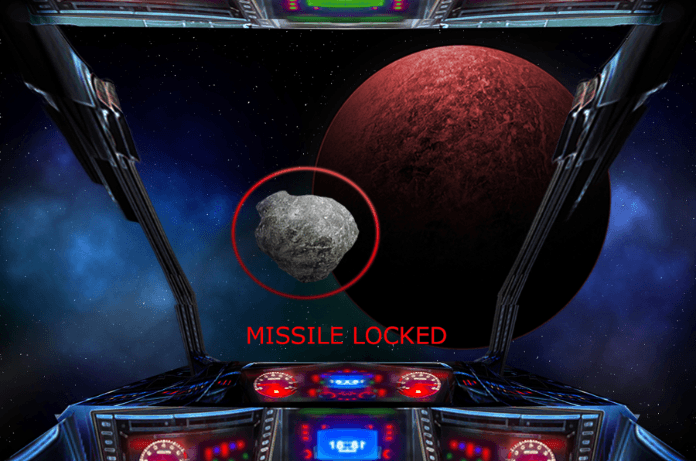India’s defense sector has taken a significant leap forward with the introduction of the Astra simulator by Combat Robotics India. This innovative simulator is designed to enhance the operational readiness of Unmanned Ground Vehicles (UGVs), Marine Vehicles (both surface and underwater), and Aerial Vehicles (UAVs). Supported by the Technology Development Fund (TDF) of the Defence Research and Development Organisation (DRDO), Astra offers a unique platform for training and testing unmanned systems across diverse domains without real-world logistical and safety risks.
The Astra simulator provides an immersive and realistic environment that allows operators to train in varied scenarios, replicating real-world challenges. By offering multi-domain capabilities, it enables personnel to test unmanned vehicles in ground, marine, and aerial settings, helping them hone their skills and strategies in a controlled, risk-free environment. This is a major advancement for unmanned vehicle training, as it allows for comprehensive scenario simulations that would otherwise require expensive and complex field tests. With data-driven insights for research and development, Astra also helps refine the performance of unmanned systems, contributing to the technological evolution of India’s defense landscape.
Enhancement of India’s Nuclear Deterrence Capabilities
This move is part of India’s broader push to strengthen its indigenous defense capabilities. India has made significant strides with several successful missile tests, including the indigenously developed Agni-5 missile. The Agni-5 flight test was particularly notable as it featured Multiple Independently Targetable Re-Entry Vehicle (MIRV) technology, demonstrating India’s growing prowess in missile systems and strategic defense capabilities. This missile is designed to enhance India’s nuclear deterrence capabilities, reinforcing its security framework.
Further highlighting India’s advancements in missile technology, the country also conducted a successful flight test of the New Generation AKASH (AKASH-NG) missile system. This missile is designed to intercept and destroy high-speed, agile aerial threats, marking a significant improvement over its predecessor. The AKASH-NG is poised to strengthen India’s air defense by offering improved capabilities against a wide range of aerial threats.
Other notable advancements include the MPATGM (Man-Portable Anti-Tank Guided Missile), a third-generation missile that offers fire-and-forget, attack, and night operation capabilities. This system is designed to engage and neutralize armored vehicles in combat scenarios. Similarly, the NASM-SR, India’s first indigenous air-launched anti-ship missile, and the VSHORADS (Very Short Range Air Defense System), a portable air defense system against low-altitude aerial threats, further demonstrate India’s progress in creating cutting-edge weaponry.
The Helicopter-launched Nag, another milestone in India’s defense technology, is a fire-and-forget Anti-Tank Guided Missile capable of engaging battle tanks in both direct and top-attack modes. The system operates in all weather conditions, including day and night, and is highly effective against tanks equipped with conventional and explosive reactive armor. These developments underscore India’s commitment to building a robust defense infrastructure that is self-reliant and able to meet modern warfare demands.
Adding to this, the QRSAM (Quick Reaction Surface-to-Air Missile) system provides mobile air defense coverage to the Indian Army’s mechanized units in the Tactical Battle Area. This system is designed to offer quick-response air defense, enhancing the Army’s tactical capabilities in dynamic battlefield environments. Complementing these innovations, the ASTRA missile is an advanced beyond visual range air-to-air missile capable of engaging highly maneuvering supersonic aerial targets, further enhancing India’s air superiority.
The Multi-Domain Capability
In addition to these missile systems, the DRDO, in collaboration with the Strategic Forces Command (SFC), successfully tested the Agni-Prime ballistic missile. This missile is an important addition to India’s strategic deterrence capabilities and will serve as a powerful force multiplier for the Armed Forces.
Key Features of the Astra Simulator
- Data-driven insights for R&D
- Multi-domain capability
- Realistic scenario simulation
- AI-powered decision support
- Scalable and customizable

The Astra Simulator’s key features include its multi-domain capability, which supports unmanned systems across ground, marine, and aerial platforms. It also offers realistic scenario simulations that provide operators with experience in dealing with complex situations. The AI-powered decision support system adds another layer of intelligence, enabling operators to make quick, informed decisions in the heat of the moment. Astra is scalable and customizable, making it adaptable to various training needs and ensuring it can evolve alongside technological advancements.
Powering-Up the BIG
These developments collectively highlight India’s ongoing efforts to strengthen its defense sector through innovation and indigenous research and development. The introduction of the Astra simulator, alongside advancements in missile and unmanned vehicle technology, showcases India’s growing capabilities in modern warfare.
By embracing cutting-edge technology, India is well-positioned to meet the challenges of contemporary defense needs, securing its place as a formidable power in both defense and unmanned vehicle technology.

